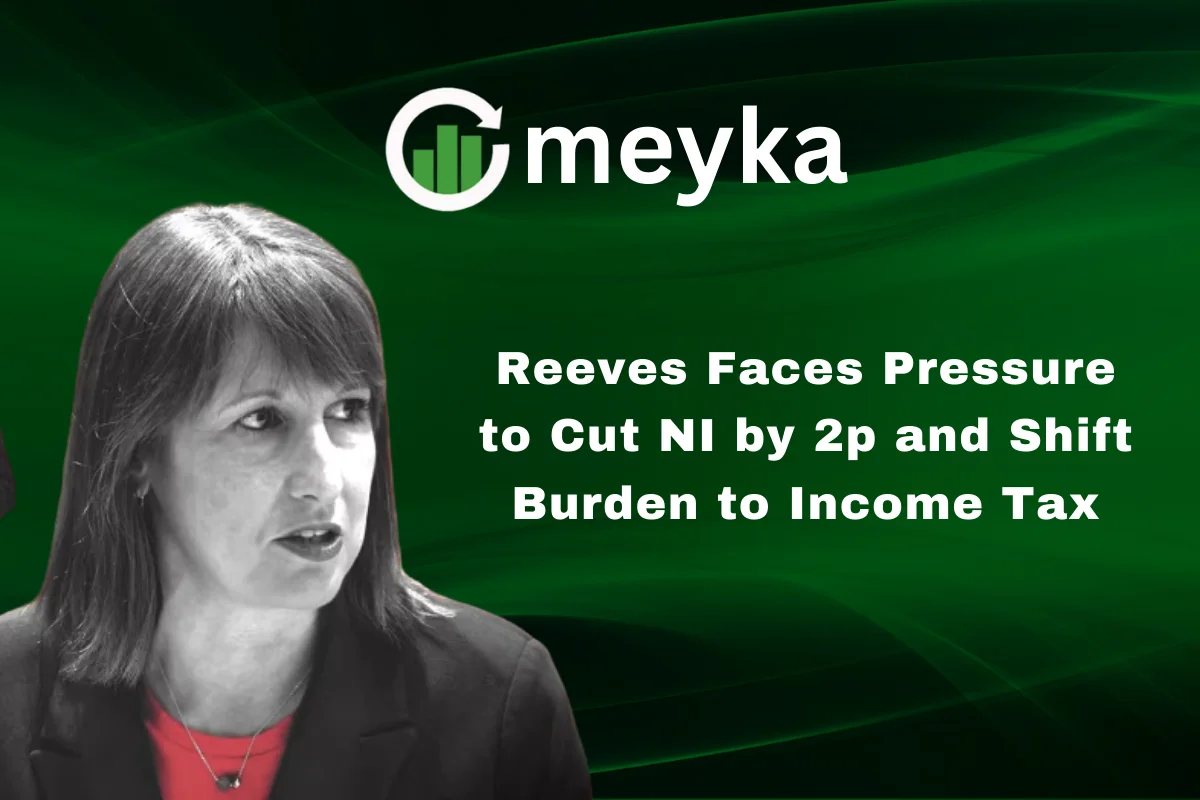Reeves Faces Pressure to Cut NI by 2p and Shift Burden to Income Tax
Chancellor Rachel Reeves is under growing pressure to deliver a 2p cut in National Insurance (NI) and transfer part of the tax burden onto income tax. The proposal is seen as both a political test and an economic balancing act, as the government looks for ways to ease the cost-of-living crisis without undermining public finances.
Why Reeves Is Facing Calls to Act
National Insurance is widely viewed as an unfair levy on working households, as it does not apply to retirees and places an extra cost on employers. Cutting it would increase workers’ take-home pay and provide businesses with much-needed relief.
Shifting the burden to income tax would broaden the contribution base, ensuring that wealthier households and retirees also share the responsibility. Supporters argue this would make the system fairer and simpler, with fewer overlapping thresholds between income tax and NI.
Fiscal Concerns Behind the Debate
For Reeves, the challenge is not just political but also fiscal. National Insurance raises a large portion of government revenue. A 2p cut could leave a multibillion-pound shortfall unless offset by higher income tax receipts.
The Office for Budget Responsibility (OBR) has already warned about rising public debt and mounting pressures from an aging population. Any permanent reform must ensure that essential services like healthcare and pensions remain adequately funded.
Impact on Businesses and the Stock Market
Employers, who also pay NI, stand to benefit from lower costs if the proposed cut is implemented. This could encourage investment and allow for wage growth.
Meanwhile, the stock market is closely watching Reeves’ moves. A tax cut for workers would boost disposable income, benefiting sectors like retail and hospitality. Companies in growth industries, including AI stocks, may also see indirect benefits, as firms could reinvest NI savings into innovation. According to the London Stock Exchange, investor confidence in UK equities is fragile, and clarity on tax reforms could provide much-needed stability.
Looking Back at Past Reforms
This is not the first time NI has been targeted for reform. In 2011, George Osborne shifted tax balances by cutting NI while increasing VAT, a move criticized for hurting lower earners. More recently, temporary NI cuts were introduced during COVID-19 to support workers, but these were later reversed.
Reeves has the opportunity to introduce a longer-term strategy, simplifying the system and aligning it with modern economic needs.
Political Stakes for Reeves
As the UK’s first female Chancellor, Reeves faces both opportunity and risk. Cutting NI would be widely welcomed by workers, but increasing income tax could anger middle-class voters. The Conservatives are already positioning themselves as the party of tax cuts, putting pressure on Reeves to deliver reforms that are both fair and popular.
Her handling of this issue could define the Labour government’s broader economic credibility. If voters see her policies as balanced and just, Reeves could strengthen her leadership. But if the shift is seen as another tax rise in disguise, it may harm Labour’s political standing.
Economic Outlook for the UK
Economists believe the immediate impact of an NI cut would be positive for growth, with households spending more and businesses hiring with confidence. But long-term results depend on how income tax adjustments are designed.
A progressive structure could ensure high earners contribute more, supporting fairness. A flatter increase, however, could hit middle-income households hardest, limiting the boost in consumer confidence.
Global investors will also be paying attention. The Bank of England has stressed that fiscal credibility is vital for currency stability. Poorly managed reforms could weaken the pound and reduce appetite for UK assets.
Public Fairness and Social Equity
The debate is ultimately about fairness. Workers argue NI punishes them while wealthier retirees escape contributions. By shifting the burden toward income tax, Reeves could rebalance responsibilities and fund public services more equitably.
Yet critics warn that such changes could increase pressure on middle-income households already squeezed by rising housing and food costs. Public support will depend on whether the reforms are seen to genuinely ease burdens rather than redistribute them unfairly.
Conclusion
Reeves faces one of the toughest decisions of her career. Cutting NI by 2p would provide much-needed relief to workers and businesses, but shifting the tax load to income tax carries economic and political risks.
If designed carefully, the reforms could simplify the tax system, support fairness, and boost economic confidence. If mishandled, they risk eroding trust in both the Labour government and the UK economy. The months ahead will determine whether Reeves can balance short-term relief with long-term fiscal responsibility.
FAQs
Because NI mainly impacts workers and employers, while retirees do not pay it, many argue the system is unfair compared to income tax.
Employers also contribute to NI, so a reduction would lower their costs, potentially leading to higher wages, investments, and stock market growth.
If structured poorly, it could hurt middle-income households and reduce public support, while raising concerns over fiscal stability.
Disclaimer:
This content is made for learning only. It is not meant to give financial advice. Always check the facts yourself. Financial decisions need detailed research.






